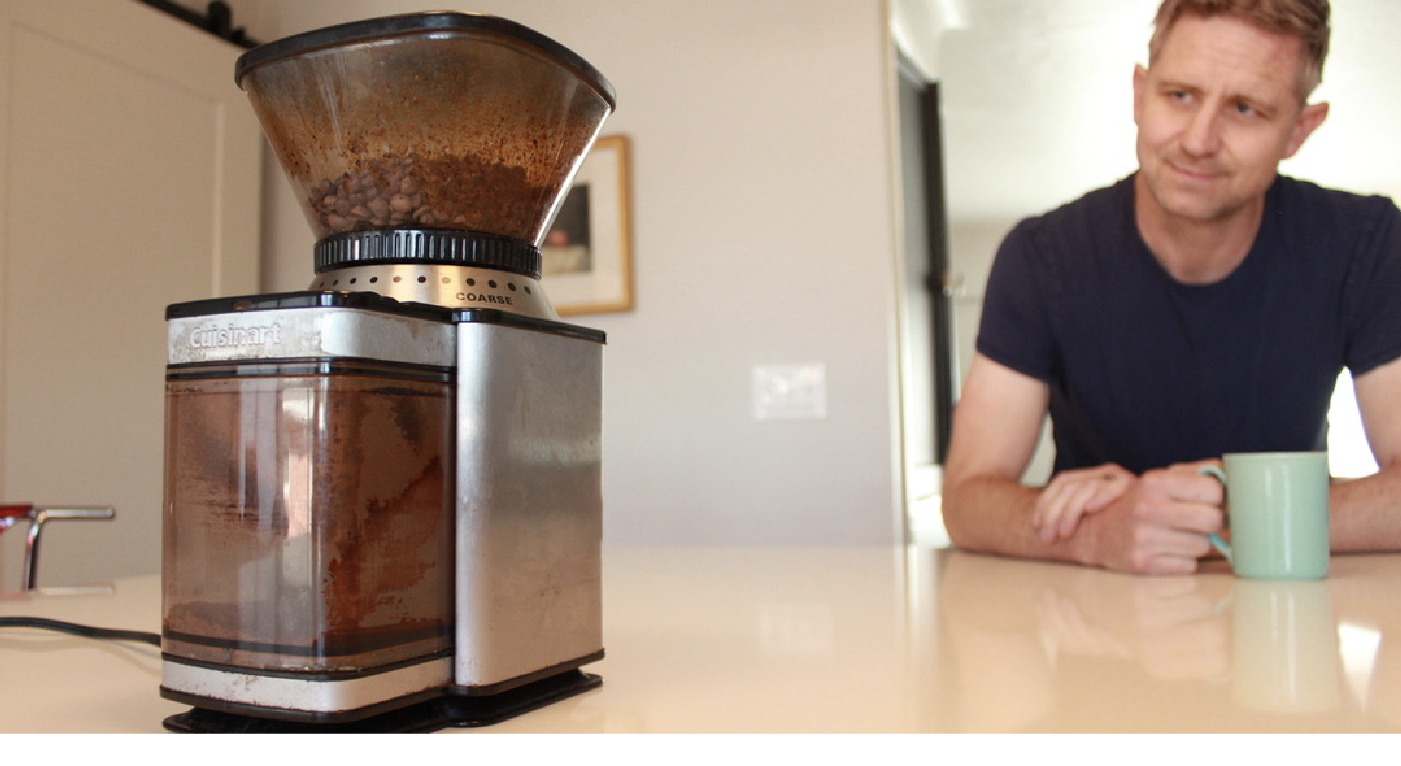Making a pot of coffee is one of my favorite morning rituals. After assembling my AeroPress, I set the kettle on and push the start button on my trusty Cuisinart burr grinder. It was a hand-me-down from a friend, so I’ve always had a soft spot for the device, but recently it endeared itself to me even more.
How? By not working properly.
Once or twice a month, when I press the start button, it makes one belabored turn and then stops. I’ve discovered that if I hold down the start button and slide the lever that selects the grind duration back and forth, I can spur it to try harder. It’s almost like I can hear the machine grunting as it labors to get moving. Sometimes I’ll even dive to the bottom of the bean funnel with the AeroPress’ stirring paddle to move the beans around and give it more help.
Once it finally gains some momentum, it springs back to life, grinding as good as ever. I’ll think it’s somehow healed itself, but then, a week or two later, it will need my help again.
My wife has suggested we get a new grinder, but now that seems impossible. The grinder that was once a cold but reliable machine has taken on a decidedly human trait: it needs my encouragement.
The realization that I now have a deep emotional bond with a coffee grinder got me thinking about anthropomorphism in design—specifically about how a product’s shortcomings can create opportunities to engender empathy. Conversational design in particular provides some great potential use cases.
Imagine a customer is interacting with an intelligent digital worker (IDW) or chatbot, trying to get help with an order.
CUSTOMER: I need help. I received my order in the mail but only part of it was delivered.
IDW: Let me see if I can help. What was the order number?
CUSTOMER: It was order number 12345. I placed the order last week.
IDW: It looks like you ordered a set of hand-dipped candles and a 4’ pewter wizard, is that right?
CUSTOMER: That’s correct. The candles arrived, but I have no pewter wizard.
IDW: Ok. I’ll connect you with a customer service agent.
That’s not a terrible script, but what if the IDW was more forthright about it’s shortcomings?
IDW: It looks like you ordered a set of hand-dipped candles and a 4’ pewter wizard, is that right?
CUSTOMER: That’s correct. The candles arrived, but I have no pewter wizard.
IDW: I’m sorry to hear about your missing pewter wizard. Let me see if I can help.
CUSTOMER: Ok.
IDW: Hmmm it looks like sometimes items weighing more than 50lbs are shipped using a different carrier. This isn’t something that I can confirm, but I’m connecting you with a service representative now.
CUSTOMER: Thank you … friend.
That’s a subtle shift, but sometimes knowing that a machine is trying to do its best can have meaning. An unexpected dash of anthropomorphism can brighten an experience, create a sense of connection, increase brand loyalty, and even make a cup of coffee taste that much better.








